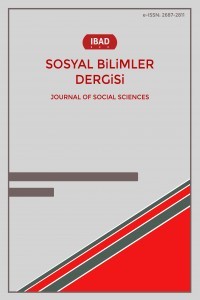İZMİR KÖRFEZİ BATIKLARI
Ege'nin Anadolu yakasının bugünkü merkezi İzmir, bölgenin tarihsel geçmişinin zenginliği, antik çağın pek çok önemli siyasal, ticari ve kültürel kentinin oluşturduğu bu çetrefil örümcek ağının ortasında konumlanmıştır. Çalışma alanımız olan İzmir Körfezi aslında şehrin tarihine bire bir uyumlu olarak şekillenmiş gibidir. Bölgede özellikle 18. ve 19. yüzyılda ağırlık kazanan ticari ve sosyal hayattaki rekabet İzmir Körfezi'nin aktif olarak tercih edilmesine ve kullanılmasına sebep olmuştur. Bu süreçte körfezde birden çok hem ticari hem de yolcu taşıyan gemiler çeşitli sebeplerden kaza yapıp batmışlardır. Çalışmamızın amacını ve başlığını oluşturan "İzmir Körfezi Batıkları" ndan şu ana kadar saptanan batıklar Dokuz Eylül Üniversitesi Deniz Bilimleri ve Teknolojisi Enstitüsü'ne bağlı Dokuz Eylül 3 gemisiyle tespit edilmiştir. Çalışmada, deniz jeolojisi ve jeofiziği araştırma cihazlarından, çift frekanslı sığ sismik sistemi ve yanal taramalı sonar sistemi kullanılmıştır. Sonuçta tespit edilen 3 batık'dan biri ilk kez ortaya çıkarılmış ve hangi dönemde battığına dair araştırmalarımız devam etmektedir. Sadece İzmir Körfezinde değil benzer şekilde kıyılarımıza yakın alanlarda yapılacak çalışmalar sayesinde ülkemizde sualtında yatan arkeolojik miras rahatlıkla su yüzüne çıkarılabilecektir.
IZMIR GULF WRECKS
Today the center of the Anatolian side of the Aegean, Izmir, is situated in the midst of this complicated spider web created by the wealth of the historical past of the region, and by many important political, commercial and cultural cities of antiquity. In our workplace, İzmir Bay, it seems as if the history of the city was shaped in harmony with the individual. Especially in the 18th and 19th centuries, the commercial and social competitiveness of İzmir Gulf has been actively preferred and used. In this process, ships carrying more than one commercial passenger in the Gulf have crashed and sank from various causes. The aim of the study and the headings of "İzmir Gulf Submergers" are determined by our Research Vessel Dokuz Eylül 3, Dokuz Eylül University Marine Science and Technology Institute. In the study, a double frequency shallow seismic system and a lateral scanning sonar system were used from marine geology and geophysical research equipment. One of the 3 detected wrecks was uncovered for the first time and our investigation into what is currently going on is still going on. Not only in the Gulf of Izmir, but also in similar areas, our archaeological heritage lying underwater in our country will be able to be surfaced easily.
___
- Voyage De Richard Pockocke (1773). Voyage de Richard Pockocke, Neuchatel, Societe Typographique, Cilt V, s.6-7
